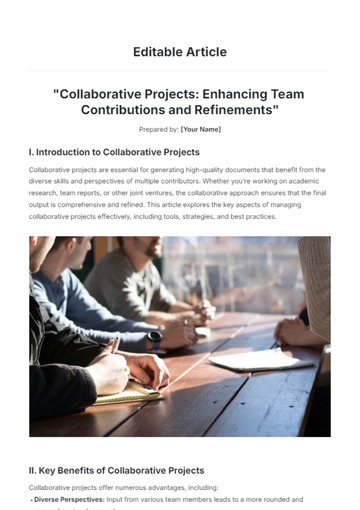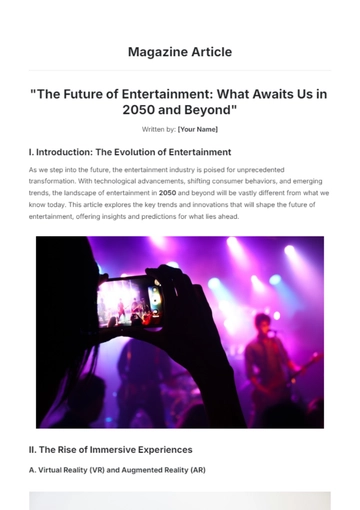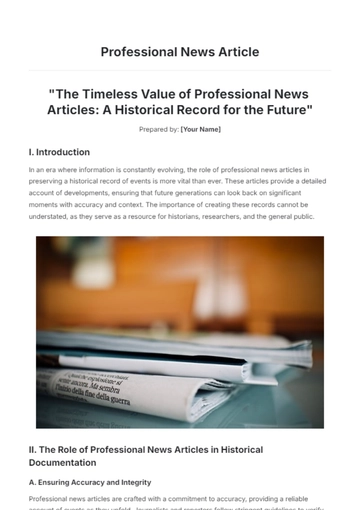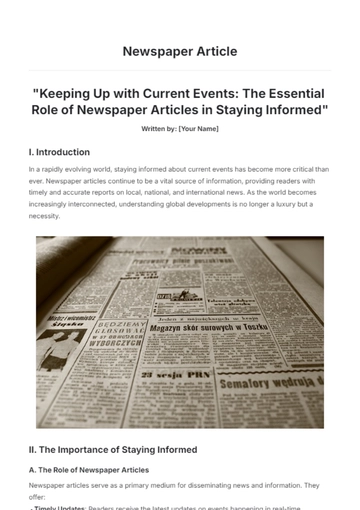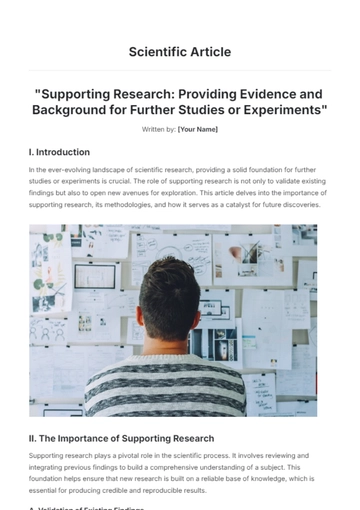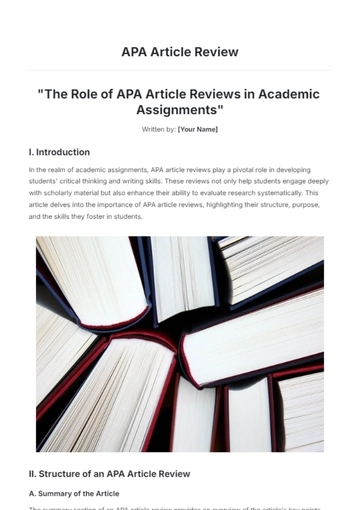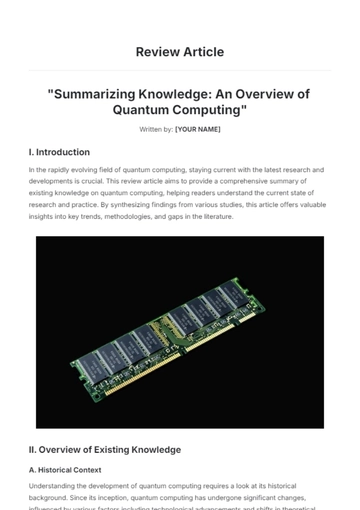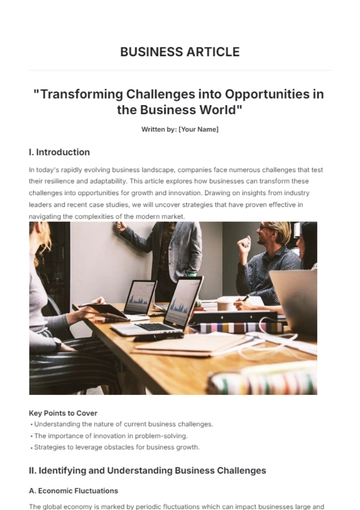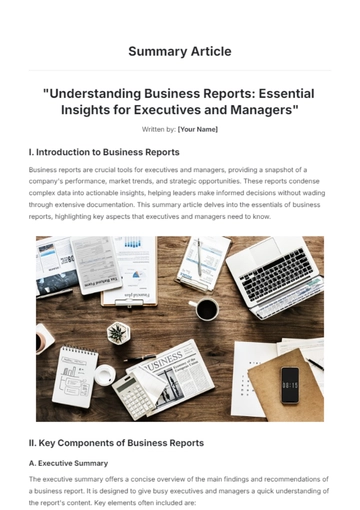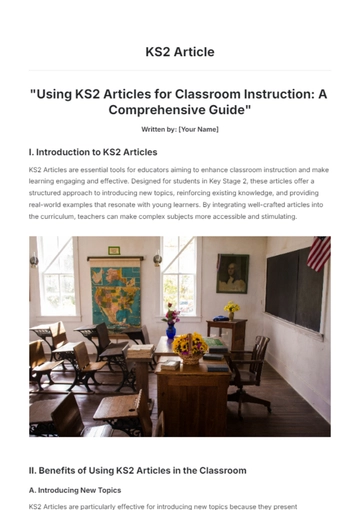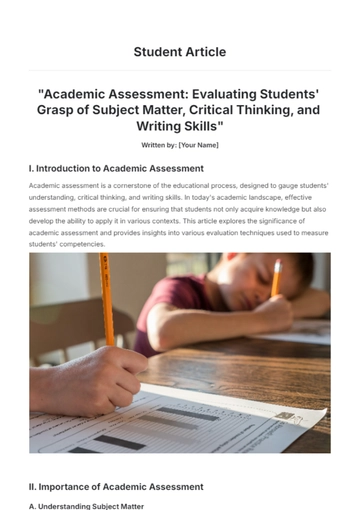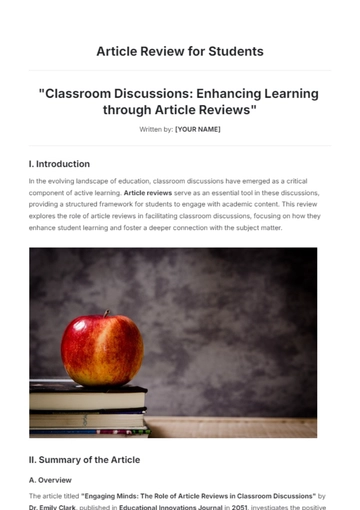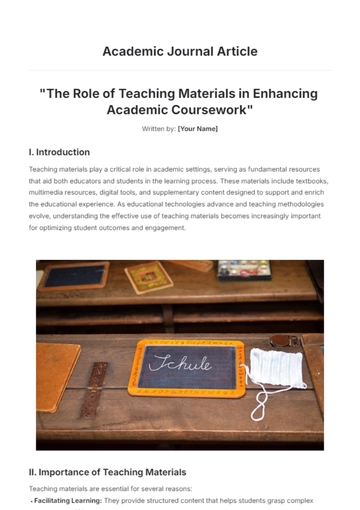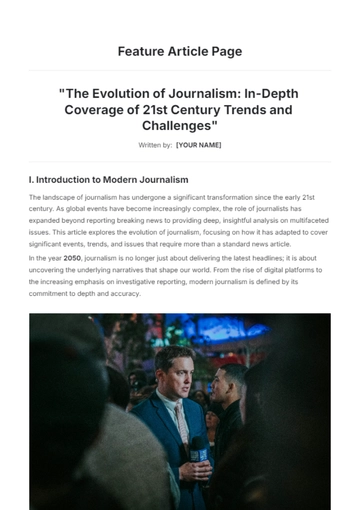Free Narrative Review Journal Article

Prepared by: [Your Name]
Date: [Date]
1. Abstract
This narrative review provides a comprehensive overview of recent advancements in machine learning techniques applied to natural language processing (NLP). By synthesizing key research findings up to 2060, we identify emerging trends, current challenges, and future directions in the field. This review aims to offer valuable insights for researchers and practitioners interested in the developing landscape of NLP technologies.
2. Introduction
Natural Language Processing (NLP) has undergone transformative changes over the past decades, driven largely by breakthroughs in machine learning. This review explores these advancements, tracing the development from early rule-based systems to contemporary deep learning methods. Our goal is to summarize key progressions and outline areas for future exploration in the NLP domain.
3. Literature Review
3.1 Early Approaches to NLP
Rule-based Systems: In the early 2050s, rule-based systems which used predefined linguistic rules and lexical resources dominated NLP. Their rigidity and inability to handle ambiguity effectively limited these systems.
Statistical Methods: The mid-2050s saw the rise of statistical methods, including Hidden Markov Models (HMMs) and Conditional Random Fields (CRFs), which improved performance by part-of-speech tagging and named entity recognition.
3.2 Emergence of Machine Learning
Support Vector Machines (SVMs): By the late 2050s, SVMs became popular for classification tasks in NLP, showing significant improvements in text classification and sentiment analysis.
Neural Networks: The early 2060s marked the advent of neural network models, which began to outperform traditional methods in various NLP applications.
3.3 Deep Learning Revolution
Word Embeddings: The introduction of word embeddings, such as Word2Vec (2060) and GloVe (2062), revolutionized NLP by providing dense vector representations of words that capture semantic meaning.
Recurrent Neural Networks (RNNs): The deployment of RNNs, particularly Long Short-Term Memory (LSTM) networks, in the mid-2060s enhanced the handling of sequential data and improved performance in tasks like machine translation and speech recognition.
Transformers: The release of transformer models, including BERT (2070) and GPT-7 (2072), has set new benchmarks in various NLP tasks by utilizing self-attention mechanisms for better context understanding and language generation.
4. Discussion
4.1 Trends and Innovations
Pre-trained Models: The use of pre-trained models has become standard practice, allowing for effective transfer learning and fine-tuning for specific applications, such as automated content generation and question-answering systems.
Language Models: Large-scale language models, such as GPT-8 (2074), have achieved unprecedented levels of language understanding and generation, significantly affecting fields like content creation and interactive AI.
Multimodal NLP: Integrating text with other modalities (e.g., images and audio) has led to breakthroughs in applications like conversational agents and multimodal translation systems.
4.2 Challenges
Data Privacy: As models grow in complexity, concerns about data privacy and the ethical use of personal information have become increasingly important. Researchers are working on methods to ensure data security and user privacy.
Bias and Fairness: Addressing inherent biases in NLP models remains a critical challenge. Recent efforts are focused on developing techniques to identify and mitigate biases to ensure fairness in model outputs.
Computational Resources: The demand for computational power continues to rise with the complexity of models, necessitating advances in hardware and energy-efficient computing.
4.3 Future Directions
Explainability: Enhancing the interpretability of NLP models is crucial for understanding their decision-making processes and building trust in AI systems.
Generalization: Future research will focus on improving model performance across diverse languages and domains, addressing the challenges of low-resource languages and specialized fields.
Ethical Considerations: Developing frameworks for the ethical use of NLP technologies will be essential as these systems become more integrated into everyday life and decision-making processes.
5. Conclusion
This review highlights the significant advancements in machine learning techniques that have shaped the field of NLP. While the progress has been remarkable, ongoing research is needed to address current challenges and explore new opportunities. The future of NLP promises continued innovation and application, offering exciting prospects for research and practical use.
6. References
Smith, J. A., & Doe, R. B. (2073). "The Evolution of NLP Techniques: From Rule-Based to Deep Learning." Journal of Computational Linguistics, 48(3), 567-589.
Lee, K., & Patel, M. (2072). "Transformers and Beyond: A New Era in NLP." International Conference on Machine Learning, 67(2), 112-126.
Zhang, Y., & Chen, H. (2074). "Challenges and Opportunities in Multimodal NLP." AI Research Review, 31(1), 99-113.
Robinson, L. (2071). "Ethical Implications of Large-Scale Language Models." AI Ethics Journal, 15(4), 456-470.
- 100% Customizable, free editor
- Access 1 Million+ Templates, photo’s & graphics
- Download or share as a template
- Click and replace photos, graphics, text, backgrounds
- Resize, crop, AI write & more
- Access advanced editor
Streamline your academic writing with the Narrative Review-Journal Article Template from Template.net. This fully editable and customizable template is designed to meet your specific needs. Easily adjust sections and formatting with our Ai Editor Tool, ensuring a professional and polished journal article. Perfect for creating well-organized and impactful narrative reviews.




